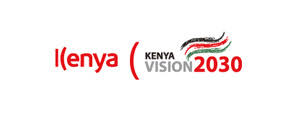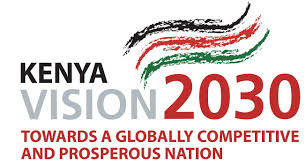KENYA VISION 2030: A Darling of Many!

The much hyped about Kenya’s’ development plan, The Vision
2030 otherwise known as
Ruwaza ya Kenya 2030 in Swahili, is aimed at transforming the state of
the nation into a more industrialized , middle-income state.
Launched by President Mwai Kibaki and Prime Minister Raila
Odinga on 10th June 2008, it was aimed to cover the period 2008 to
2030, and in providing quality and efficient services as well as a clean
environment aimed at improving the living conditions of the people by the time
it comes to completion.
Developed through "an all-inclusive and participatory
stakeholder consultative process, involving Kenyans from all parts of the
country, the Development plan is based
around three "pillars," that is :Economic, Social, and Political
pillars.
The programme that by then lain under the Ministry of state
for Planning, headed by Hon. Wycliffe Oparanya, was to be implemented in
successive five-year medium –term plans with the first plan covering the year
2008-2012 and the next one 2012-2017 and so on until 2030.
With the development plan, Kenya expected to achieve the Millennium
Development Goals [MDGs] by the 2015 deadline.
However, the vision 2030, a darling of many Kenyans, could
still be a dream in the night. the Governments,
wake up call to achieving its set goals could be a nightmare to itself as some
of its organs keep dragging the process backwards.
However much the programme was launched by the Government,
the reality is that it is not committed to fulfilling its agenda. The top
Government officials who are put in place to ensure the programme succeeds
however view this from a profit making and a wealth enriching perspective.
I am afraid that the country may not even realise some of
the Millennium Development Goals that are to be achieved by 2015. The illiteracy
levels are still high as well as the infant mortality rate and this is a factor
that will make it hard for the state to achieve its vision 2030.

Surprisingly enough, the programme has been politicized and
its feasibility to unlock certain sectors to make an economic impact are
derailed to the extent that lowering the unemployment rates and the high
poverty levels are becoming a dream never to be realised.
Ahem! Initiating this programme was deemed as a walk in the
right direction. Having involved stakeholders from all over the country, the
vision was tooled to focus on reforms and development in eight key sectors:
- Macroeconomic stability for long-term
development
- Continuity in governance
reforms
- Enhanced equity and wealth
creation opportunities for the poor
- Infrastructure
- Energy
- Science, technology, and
innovation (STI)
- Land
reform
- Human resources development
- Security

Founded on those eight sectors, the
Economic pillar was aimed
at improving the prosperity of all Kenyans through an economic development
programme, covering all the regions of Kenya and raising the country’s’ GDP to
10% per annum beginning 2012.
Through the Social pillar strategy, Kenya aimed at
building a just and cohesive society with social equity in a clean and secure environment.

On the other hand, the
Political pillar, aimed at realising
a democratic political system founded on issue-based politics that respects the
rule of law, and protects the rights and freedoms of every individual in Kenyan
society. It hoped to transform Kenya into a state in which equality is
entrenched, irrespective of one’s race, ethnicity, religion, gender or
socio-economic status; a nation that respects and harnesses the diversity of
its peoples’ values, traditions and aspirations for the benefit of all its
citizens.
Enough said, the dream of changing the country’s’ economic,
social and political face, began with the launching of this development plan
but surely is this working out?
